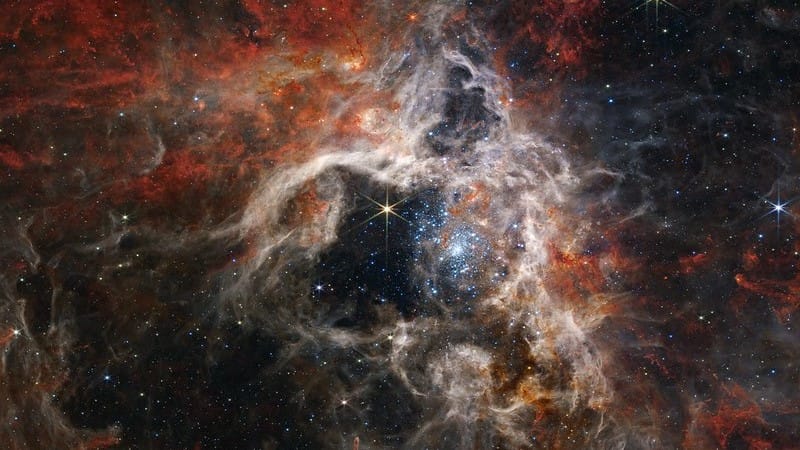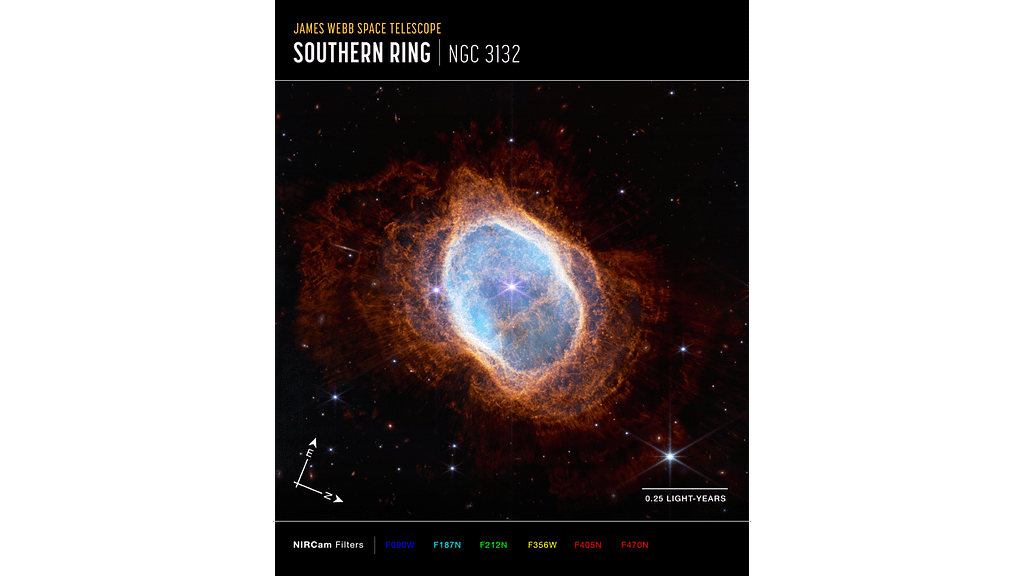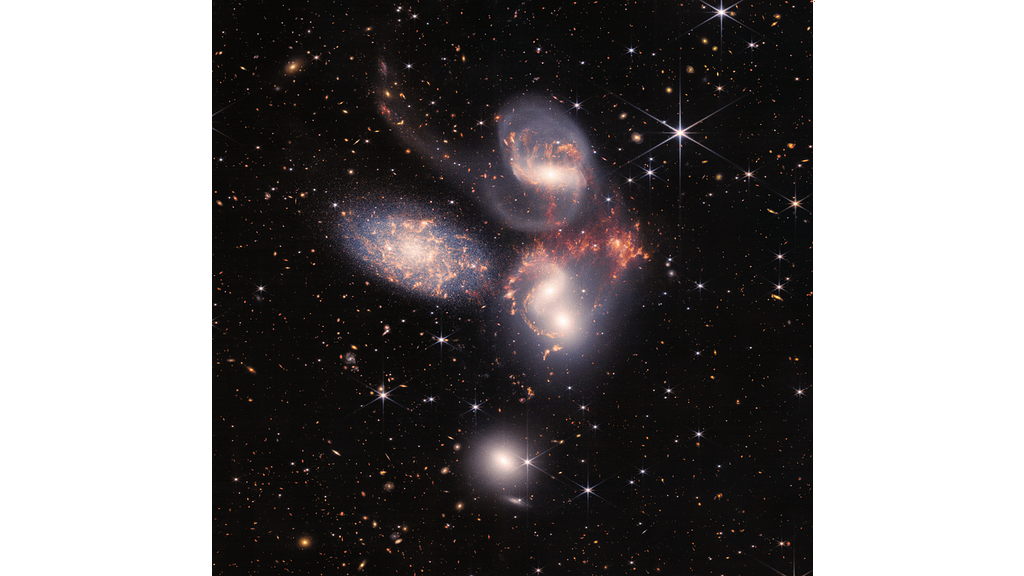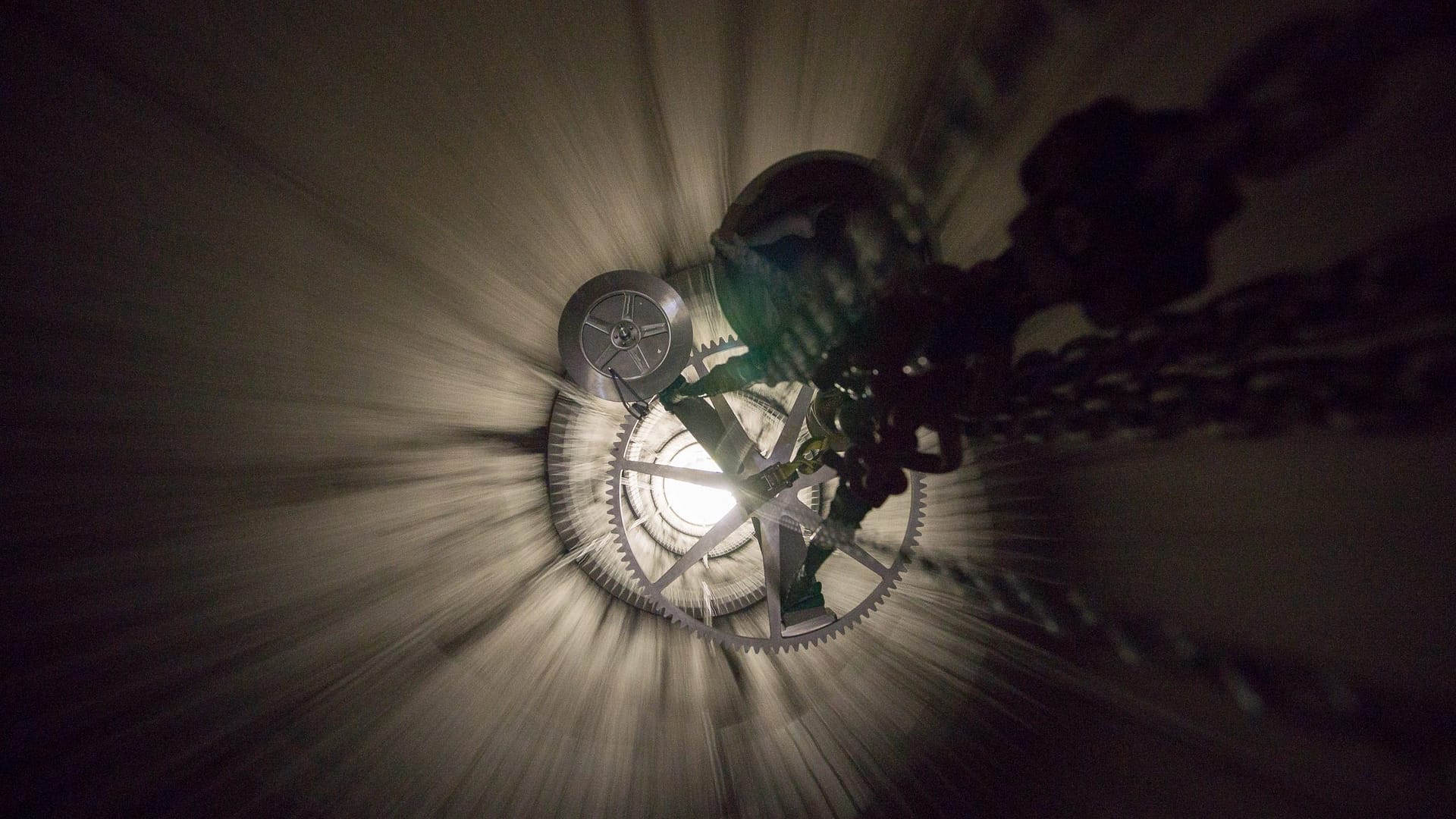On Christmas Day 2021, NASA launched a piece of technology into orbit that has gotten us closer than ever before to some of humanity’s deepest questions: How was our universe formed? When did “existence” start existing? Why are we here? This telescope is allowing us to peer into the origins of our universe, allowing us—yes, you and I—to see back in time and understand our place in the cosmos, giving us the best look we’ve ever had at the very origins of our universe.
Images from the James Webb Space Telescope allow us to explore the very beginning of time, helping NASA take the discoveries made by the famous Hubble Space Telescope a step further, getting a closer and far more detailed look at the stars and galaxies in the Milky Way and beyond.
It seems completely otherworldly, and that’s because, well… it literally is. Here’s what we’ve seen and learned so far from this astonishing leap in technology and science!

Stellar nursery 30 Doradus, nicknamed The Tarantula Nebula, reveals thousands of never before seen young stars and dozens of background galaxies.
Like many of you, I’ve spent ample time in the front yard, on walks around the block, and looking out the car window at night just staring at the stars. Do aliens exist? Are we alone in the universe? How is it possible that so much exists beyond our planet?
These kinds of questions have plagued humankind since the very beginning of recorded history, and certainly even before that. Many civilizations had their own answers for what the stars were and were for:
Thousands of years ago with no planetary tools other than the eyes and the imagination, Ancient Egyptians aligned their temples and pyramids with the stars 1, believing their pharaohs became stars in the sky after death, and that such alignment of their Earth-bound structures would give those passed pharaohs direct access to the northern sky. 2 Less than 1,000 miles away at the Ancient city of Babylon in southern Mesopotamia, Babylonians believed the planets to be the gods, moving through the sky by divine design, and began to see the patterns in the stars that they theorized could tell the future. 3 Or, on the other side of the world, the indigenous Maori of Aotearoa (New Zealand) saw the stars as eyes—seven eyes to be exact—and thought they were being gazed upon from above by the god of the wind. 4
Today, we understand the stars to be giant balls of gas, and the known universe to extend far beyond them.
It’s astonishing to acknowledge how far we’ve come as the human race, from mere speculation about what might be up there, or rather, out there, to real knowledge of exactly what is. The same stars that once helped ancient peoples navigate the seas now allow modern scientists to navigate the universe, and tell us more than we could ever imagine.
The James Webb Space Telescope is just the latest in a long line of scientific innovations to help answer these big questions. And the images JWST is returning? There aren’t sufficient words in the English language to describe their brilliance.
So… how does it work?
Using a series of mirrors, sun shields, infrared lenses, and lightweight optics, the telescope’s infrared cameras, spectrographs, sensors, and instruments capture the light from far away stars and galaxies to create stunning images 5. The Webb builds on the work of the famed Hubble Telescope using it’s “longer wavelength coverage and greatly improved sensitivity” 6 giving us images with stunning clarity even from far away.
These galaxies are so, so, SO far away, the light that the Webb is seeing has spent as much as 28 billion light years to get to us. 7 Stay with me here… that means the images that Webb is seeing are showing us what was present in those locations… as long as 28 billion light years ago. Because of the way light travels in space and the time it takes to travel that far, the JWST is literally providing pictures of the past.
With this knowledge of light in space, scientists designed the James Webb Space Telescope to search for the very first galaxies formed after the big bang; determine just how those galaxies, stars, and planets formed and evolved; and investigate the potential for life within those systems.
So, are we alone in the universe? In your lifetime, we could have the answer.
These first four images from the JWST provide stunning detail – more detail than we’ve ever seen – of four different types of space formations.
The first, of a planetary nebula, depicts a dying star 2,000 light years away in our home galaxy.

The Southern Ring Nebula, a planetary nebula found 2,000 light years away here in our home galaxy.
The second, of “the cosmic cliffs,” shows one of the most active star forming regions in our galaxy: a small portion of the carina nebula (7,500 light years away), which is a giant cloud of gas and dust that is actively gathering together into new stars. The image is roughly 16 light years wide, which is… hard to wrap your head around.
The third image takes us far outside our own galaxy to look at Stephan’s Quintet – a collection of four galaxies – the closest galaxies to each other that we’ve ever seen. In the background, there are hundreds and perhaps thousands of other galaxies. And in the foreground, we can see a black hole that emits the energy of 40 billion suns. This is an unfathomable amount of power, and with JWST, we can see it all.

Stephan’s Quintet, found 300 million light years away.
The last of the four initial Webb images is the furthest from us. 4.6 billion light years from the Earth, a galaxy cluster sits, and its gravitational pull blurs light in a way that magnifies galaxies that are even further away. This deep field image alone could be studied for years, despite the fact that it shows just a small portion of what Webb has given us the potential to see.
Since these first four images were released, we’ve also received dozens of others from Webb, including the clearest picture of Neputne’s rings that we’ve ever seen. That’s right – step aside, Saturn!
To infinity… and beyond!
There is so much wonder to be found in the images from the JWST so far. Did you know that whenever you or someone you know draws a star with points coming off it, they’re actually drawing what the camera sees, not what the star actually looks like? Or that galaxies change color and get redder as they age? These are just a few of the remarkable insights that these images depict.
To take us on a tour of space and explain more about what we’re actually seeing in the first four images from the JWST and how the telescope works, here’s Hank Green from SciShow with the details.
Hank Green is one of our all time favorite creators, and has a real reputation on the internet for absolute credibility and good intention. His 15 YouTube channels including SciShow and Crash Course are goldmines of incredible information about our planet and our world, so we highly recommend checking them out. You can also find Hank on TikTok, where you can find a wealth of fun and knowledge.
To learn more about the James Webb Space Telescope, visit the JWST Website. And definitely check out the full library of first JWST images and latest JWST space images on NASA’s JWST website, all of which literally—I’m not kidding—made my jaw drop Genie style.

Galaxy IC 5332, as pictured by the Hubble Space Telescope (left) and the James Webb Space Telescope (right)
This in depth look at the first four images is deeply fascinating and will be studied for years to come, and yet, the JWST has already released dozens more. We find ourselves in potentially the most exciting time ever for space exploration. The things we will learn, heck, the things we will find, are unimaginable in the best way possible.
“Look around, look around, at how lucky we are to be alive right now.”
Angelica Schuyler, from Broadway Musical Hamilton
So, what’s next?
While the Webb keeps gathering its stunning images over the next five years of its mission, there’s another space expedition underway which we should all be watching. NASA’s planned Artemis I launch will once again (for the first time in 50 years) land humans on the moon. Soon after, the Artemis program plans to—for the first time ever—have humans set foot on Mars. Check out our article about this incredible endeavor to learn more about the inspiring individuals (including the first woman who will walk on the moon) who are embarking on this wonderful challenge:
We’re Going to the Moon Again! The Reasons Why Are Amazing
Need something awesome to look forward to? In 2024, you’ll be able to look up at the moon and know that humans are on it! That’s right, we’re going to the moon again, and this historical mission is bringing us closer to a better shared future, for everyone.
Read Article Watch Video Listen to PodcastThese looks into space give us a real glimpse of just how small we really are: just ants running around on a huge rock that is hurtling through space. And when we realize that we are truly all in this together, it can change our perspectives on every single issue in the world.
It’s true – taking a real look at space can absolutely change hearts and minds. Many astronauts have gone to space fighter pilots, and come down as humanitarians and philanthropists with profound empathy for our planet and everyone on it. This phenomenon is called The Overview Effect. Hear all about it from MaryLiz Bender, whose research on the topic is truly life-changing:
The Overview Effect; Falling Back in Love with Human Potential with MaryLiz Bender (Episode #04)
As divided as we may be, you only have to look up and realize we are united under one sky. This is the passionate message of today’s thought leader Maryliz Bender, a space journalist who Co-Founded Cosmic Perspective. C.P. is a group of storytellers building a movement to share the transformational power of the cosmos through film, photography, VR, and journalism, to unite and inspire awe and wonder.
Read Article Watch Video Listen to PodcastWhile most of us will likely never go to space and never know what it’s really like up there, the images from the JWST can give us a similarly wondrous and worldly perspective.
With this new innovation, we are closer than ever to answering the questions first asked by the ancient peoples in Egypt, Babylon, Aotearoa, and beyond. And while answers about space always come with more questions, if those answers inspire just a little more wonder and possibility next time you’re looking up at the night sky, they’re worth pursuing.
- Ellen

Don’t miss out on a single article!
Enjoy unlimited access to over 500 articles & podcast that give you a positive perspective on the state of the world and show you practical ways you can help.
Notes:
- “Egyptian Civilization – Sciences – Astronomy.” Historymuseum.ca, 2022, www.historymuseum.ca/cmc/exhibitions/civil/egypt/egcs03e.html. Accessed 5 Oct. 2022. ↩
- “Early Astronomy.” Nau.edu, 2022, www2.nau.edu/~gaud/bio301/content/erlast.htm. Accessed 5 Oct. 2022. ↩
- M Willis Monroe. “What Did the Ancient Babylonians Discern in the Skies Above?” Psyche, Psyche, 23 Mar. 2022, psyche.co/ideas/what-did-the-ancient-babylonians-discern-in-the-skies-above. Accessed 5 Oct. 2022. ↩
- “What Are the Matariki “Teenage” Stars?” Wonderopolis.org, 22 Mar. 2020, wonderopolis.org/wonder/What-are-the-Matariki-%E2%80%9CTeenage%E2%80%9D-Stars#:~:text=They%20believe%20the%20stars%20are,the%20Matariki%20Stars%20for%20navigation. Accessed 5 Oct. 2022. ↩
- “Key Facts – Webb/NASA.” Nasa.gov, 2022, webb.nasa.gov/content/about/faqs/facts.html. Accessed 5 Oct. 2022. ↩
- “Key Facts – Webb/NASA.” Nasa.gov, 2022, webb.nasa.gov/content/about/faqs/facts.html. Accessed 5 Oct. 2022. ↩
- Carter, Jamie. “Webb Telescope Uses Ripple in Spacetime to Image “Earendel,” the Most Distant Star Ever Seen 28 Billion Light-Years Distant.” Forbes, 17 Aug. 2022, www.forbes.com/sites/jamiecartereurope/2022/08/15/webb-telescope-drops-stunning-image-of-earendel-the-most-distant-star-thanks-to-a-ripple-in-spacetime/?sh=788374fa256a. Accessed 5 Oct. 2022. ↩
- https://www.youtube.com/watch?v=Lf4EDcjMtmw ↩








